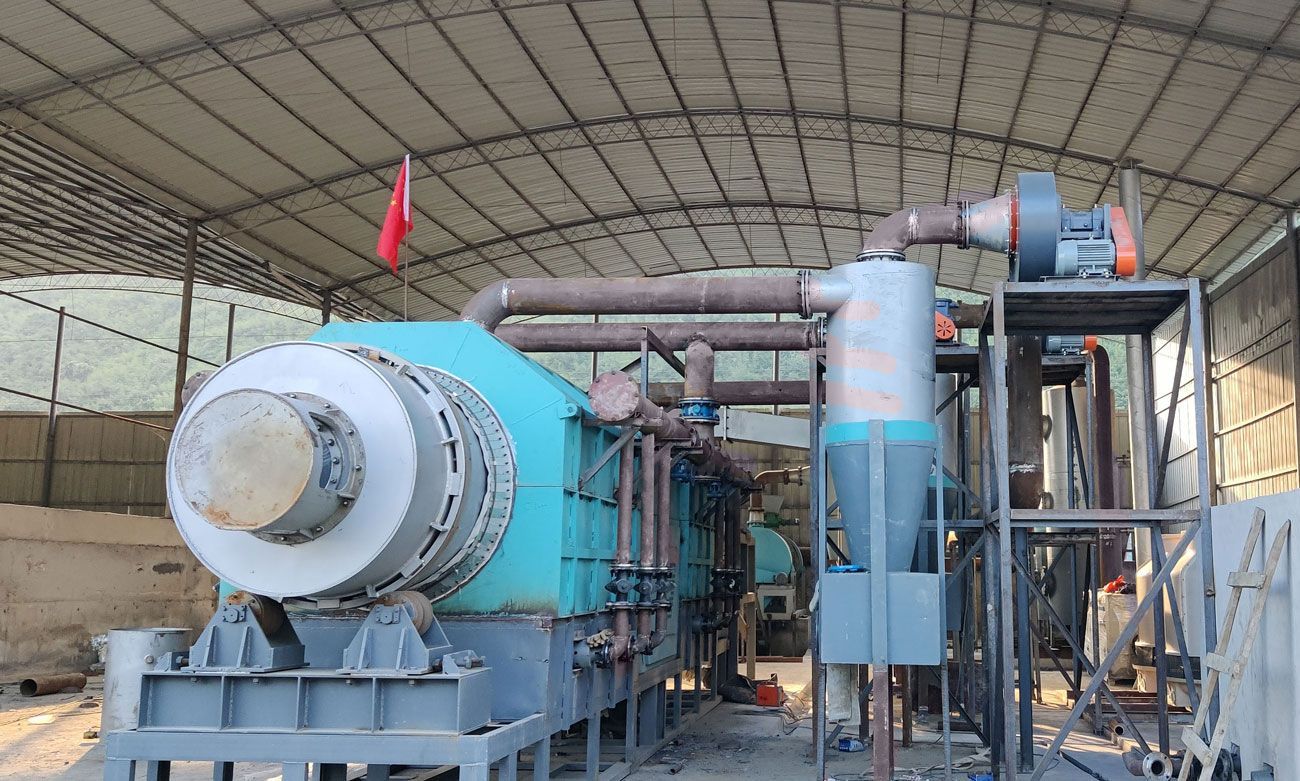The Remarkable Working Mechanism of a Charcoal Manufacturing Machine
The latest advancements in charcoal making machines have revolutionized the process of converting biomass waste and sewage sludge into high-quality charcoal.

The latest advancements in charcoal making machines have revolutionized the process of converting biomass waste, municipal solid waste, and sewage sludge into high-quality charcoal. This innovative technology has the potential to replace coal in power generation, significantly reducing the world's carbon footprint.
Modern charcoal manufacturing machines
operate on the principle of high-temperature pyrolysis, which induces a series of reactions within the carbonizing furnace. These reactions lead to the production of new energy and the formation of charcoal chunks. Some advanced machines are specifically designed for coconut shell charcoal making plants and rice husk charcoal making plants.
Compared to traditional carbonization methods, modern charcoal making machines are more environmentally friendly, offering higher efficiency, superior quality, and increased output.
Let's explore the step-by-step process of carbonization using a charcoal manufacturing machine, showcasing how cutting-edge technology can contribute to reducing the world's carbon footprint:
Various raw materials are utilized in a charcoal manufacturing machine, including biomass waste, coconut shells, wood, straw, rice husk, sawdust, palm shells, and peanut shells.
The carbonization equipment requires the raw materials to have a moisture content below 20%. Additionally, the size of the raw materials should be at least 30 mm to ensure proper processing. Carbon manufacturers often use a pretreatment device to segregate different types of raw materials, facilitating easier mixing in the carbonization equipment.
After preprocessing, the raw materials enter the carbonization furnace. The furnace is heated using traditional fuels such as natural gas, wood, or coal for approximately 30 minutes. Once the furnace reaches the desired temperature, usually between 650 and 780o C, it starts generating combustible gas. The raw materials are processed within the furnace for around 15 to 20 minutes.
Discharging the charcoal immediately after processing can be dangerous. To mitigate risks, manufacturers incorporate a cooling system to reduce the temperature of the charcoal to 30o C. Hot charcoal poses a significant fire hazard when exposed to oxygen. Charcoal making machines are equipped with cooling systems to ensure safety within the plant. Advanced machines may feature fully sealed chambers, further enhancing safety measures.
The combustible gas generated during the carbonization process undergoes a purification stage. A spray dusting system is employed to remove sulfur components from the gas. These sulfur components are then introduced into the heat furnace to produce additional charcoal. Consequently, no waste remains from the initial raw materials used in the carbonization chamber.
Apart from the sulfur components, the condenser system in the machine liquefies the combustible gas, yielding wood vinegar and tar.
Given the numerous benefits it offers, it's easy to understand the global demand for charcoal manufacturing machines. These machines have the potential to significantly reduce pollution and make the world a greener place for everyone. By embracing this technology, we can contribute to a sustainable future while enjoying the high-quality charcoal produced through this eco-friendly process.
